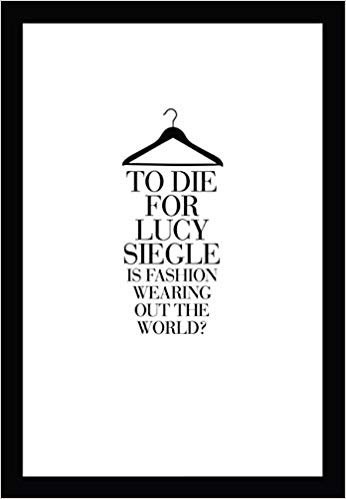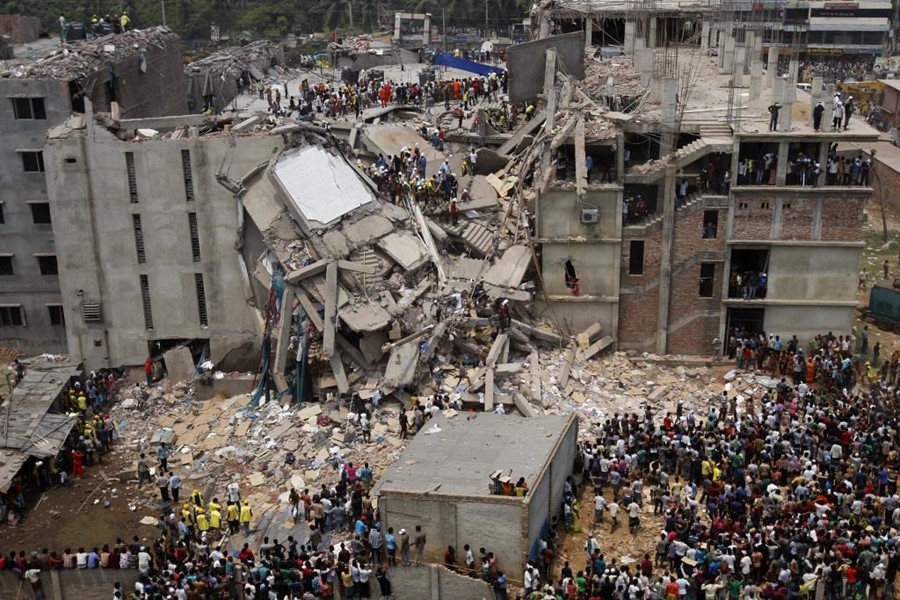Sophie Benson remembers the 2010s, a decade in which sustainability moved from fringe issue to the most defining challenge – and opportunity – of our time
We expect fashion to change over the course of a decade. What was once fresh and exciting is often, ten years later, stale and slightly embarrassing (or, if our current obsession with the early 2000s is anything to go by, already classed as solid gold vintage). But throughout the decade we’re about to leave behind, more has shifted than just silhouettes; we’re waving goodbye to the 2010s with a completely overhauled perception of the industry. Sustainability is no longer a fringe issue within fashion but the most defining challenge – and opportunity – of our time.
The decade began with a few hints at what was to come. 2010 saw the launch of Livia Firth’s now global Green Carpet Challenge, and in 2011, Lucy Siegle’s seminal book To Die For: Is Fashion Wearing Out the World? was published, offering a startlingly frank insight into an industry that had moved from right underneath our noses in local factories to the lowest, most unregulated bidders overseas.
The prescience of Firth’s and Siegle’s work wouldn’t be fully appreciated until April 24, 2013 when the Rana Plaza factory in Dhaka collapsed, killing 1,138 people and injuring thousands more. It wasn’t the first garment factory disaster ever, or even the only one in the area within a six month span (on November 24, 2012, another factory in Dhaka set on fire, killing over 100 people and injuring a further 200), but the sheer scale of it ensured that all eyes were suddenly on the fashion industry. A horrified public watched the death toll rise and took note as brands linked to the factory were announced; the likes of Benetton, Mango, Matalan and Primark. Many felt complicit in a system they’d never given a second thought to previously.

The tragedy was covered extensively in the news but memories are short so the first Fashion Revolution Day took place exactly one year after the factory collapse, in order to keep the event fresh in everyone’s mind and to demand transparency and action from the industry. Fashion Revolution’s original hashtag #InsideOut (changed to #WhoMadeMyClothes the following year) resulted in over six million Google hits globally.
Alongside Fashion Revolution, a slew of books and films began to bubble up, exposing fashion’s ills to a newly interested audience. Tansy Hoskins’ book Stitched Up: The Anti-Capitalist Book of Fashion was published in 2014, followed closely by Clothing Poverty: The Hidden World of Fast Fashion and Second Hand Clothes by Andrew Brooks, Wardrobe Crisis by Clare Press and Slave to Fashion by Safia Minney. And documentary The True Cost was released in 2015, taking us on a journey from design studios to the slums where garment workers are forced to live. The film is often cited as a point of no return for those who’ve decided to ditch fast fashion.
Supporting traditional media and spreading the word even further was an increasing amount of noise on social media from newly engaged consumers with personal platforms that had the ability to reach thousands, or even millions, of people across the world – an unthinkable prospect just a few years earlier. Even if you hadn’t read the books or seen the documentaries, you could get a TL;DR on Instagram and get involved. People were starting to pay attention to where their clothes were coming from – and the impact their clothes had on the world around them.
Under pressure to change, high street brands like H&M started to release ‘eco’ collections, featuring garments made from organic cotton and recycled materials. Accusations of ‘greenwashing’ (talking up eco credentials while still being part of the problem) were rightly made but, on a positive note, people who’d never even heard the word sustainability before were suddenly reading about it in their weekly magazines, seeing it in their social media feeds and shopping it (sort of) on their trips to the high street.
Alongside a focus on fashion, the conversation around the climate crisis reached fever pitch at the tail of the end of the decade with David Attenborough’s documentaries, the formation of Extinction Rebellion, Greta Thunberg and global climate strikes all acting as catalysts. Collectively, we began to panic, and everything – from our coffee habits to our shopping trips – were under scrutiny. If we quickly forgot the Nike sweatshop accusations of the 90s and the Gap child labour scandal of the 00s and went on shopping like nothing had happened, then this time, with our planet and future so clearly at stake, fashion’s impact became harder to overlook.
Clearly, some people manage just fine – fast-fashion e-retailer Boohoo’s profits are soaring, for example – but sustainability has begun to stake a claim, with the ethical clothing market value rising by 20 per cent last year. And the evidence of a huge shift towards sustainability is everywhere. Gucci declared itself carbon neutral in September this year, and it’s also one of many brands, including Burberry, Chanel, Coach, DKNY, Michael Kors, Prada and Versace who have gone, or pledged to go, fur-free.
Prada stepped things up with its ‘Re-Nylon’ project; a sustainable line of iconic bags, manufactured from ECONYL, a regenerated nylon yarn that can be recycled indefinitely. Then in November, it became the first fashion brand to sign a groundbreaking ‘green loan’ which hinges on hitting sustainability targets. Browns got creative with its deadstock, collaborating with Duran Lantink on a cut-and-spliced capsule collection, and Stockholm cancelled its fashion week, in search of a more sustainable alternative.
2018 and 2019 in particular were years of big changes, from the UK’s (sadly rejected) ‘Fixing Fashion’ report, to France’s ban of the burning of unsold consumer goods, the rise of rental and the news that sales of secondhand clothes could overtake fast fashion within the next decade. With brands, governments and consumers all changing tack, sustainability is dramatically reshaping the fashion industry as we head into 2020.
